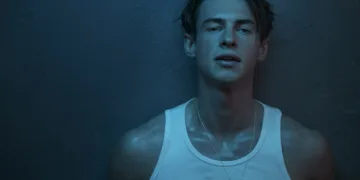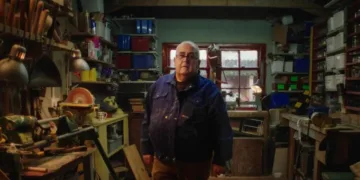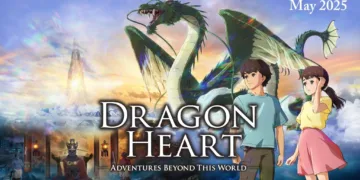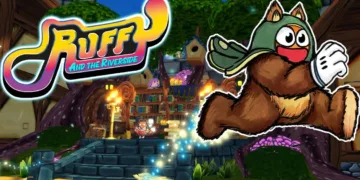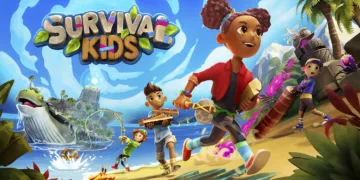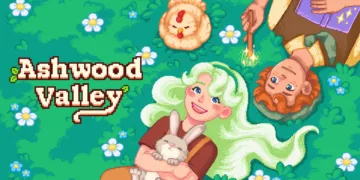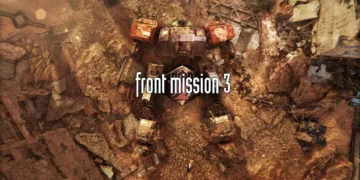There’s a powerful nostalgia attached to the Tamagotchi name, a phantom weight of a digital pet on a keychain that beeps with a need for attention. For many, it was a first taste of responsibility, a simple loop of care and response contained in a tiny plastic egg.
Tamagotchi Plaza attempts to capture that foundational memory and expand it into the space of a whole town, presenting a simple, charming narrative hook that feels like a natural evolution. You arrive in Tamahiko Town, a place brimming with colorful potential, summoned by Prince Tamahiko himself. Your mission is to help the town’s businesses flourish and beautify the central plaza, all to win the honor of hosting the grand Tamagotchi Fest.
The initial impression is undeniably sweet; the world is populated by the quirky, familiar faces of the Tamagotchi universe, and the goal feels wholesome and clear. You are positioned as a creator of joy, a benevolent force tasked with building a community.
The game sets a stage for what should be a heartfelt experience where your efforts visibly bring a town to life, making it a more vibrant place for its digital citizens. The story promises a powerful emotional feedback loop: pour in your effort, and watch a world bloom in response.
The Labor of the Loop
The way you are asked to build this community is by working. You travel from shop to shop, taking on jobs presented as mini-games. The variety seems promising at first: you become a dentist, a fashion designer, a manga artist, a sushi chef, even a rap battle participant. Each job, however, quickly reveals itself to be part of a rigid, unchanging structure.
A line of customers appears, you perform a simple task based on visual cues, and you are paid a small fee. This loop is the game’s entire mechanical core, and the narrative of “improving a business” is mechanically translated into a repetitive, joyless grind.
The money required for even small cosmetic upgrades is significant, demanding you play these same simple games dozens of times. This design creates a massive disconnect between the story’s uplifting goal and the player’s actual experience. Instead of feeling like a celebrated town hero shaping a community, you feel like an underpaid gig worker on an endless shift.
The pacing is glacial, draining the charm from the tasks and replacing it with a sense of obligation. It actively works against the narrative’s promise of fun. There are flickers of what could have been. The dentistry mini-game has a satisfying process of identifying a problem—a cavity, a dirty tooth—and using the correct tools to fix it.
The glasses shop, where you interpret a prescription and physically cut the lenses to fit a frame, provides a moment of genuine creative satisfaction. These moments, however, are rare exceptions buried under the sheer weight of repetition. They are brief sparks of engaging design in a system that otherwise prioritizes quantity of tasks over the quality of the interaction.
A Town That Won’t Talk Back
A game’s relationship with its player is a conversation, a back-and-forth of action and feedback. Tamagotchi Plaza, however, refuses to speak first. Its most confounding design characteristic is a complete refusal to provide any instructions or tutorials for its dozen-plus mini-games. You are dropped into each job and expected to figure out the rules, the controls, and the objectives entirely through failure.
This isn’t a clever puzzle that respects the player’s intelligence; it’s a fundamental breakdown in communication that creates immediate, unnecessary frustration. In the sushi shop, you might fail repeatedly before a vague arrow makes you realize you were serving from the wrong direction. In the manga studio, the game asks you to draw specific characters by name from a text prompt, an impossible task if you haven’t memorized the entire Tamagotchi cast.
This problem is made worse by the clumsy control implementation. The game is a collection of point-and-click tasks that would be a perfect, intuitive fit for the Nintendo Switch’s touchscreen, a lesson the older Tamagotchi Connection: Corner Shop games understood perfectly on the Nintendo DS. Instead, the game forces you to move a slow, imprecise cursor with the analog stick.
This creates a physical disconnect that mirrors the game’s instructional silence. It feels like trying to perform surgery with a mitten on. The hardware offers a simple, elegant solution that the software actively ignores, leaving the player with a feeling of fighting against the game rather than playing with it.
The Hollow Charm of the Plaza
Visually, the game succeeds in capturing the brand’s identity. The world is bright, the characters are cute, and the aesthetic is undeniably pleasant. It looks the part of a cheerful, welcoming place where a festival should be held.
This presentation, however, is a shallow facade, a beautifully painted but ultimately hollow set piece. The town hub is little more than a visually sparse path between workplaces. You can see over one hundred different Tamagotchi wandering about, but you can’t have a meaningful conversation with any of them.
They spout a single line of dialogue and continue on their way, existing as mobile set dressing rather than residents of a community. This prevents any real emotional bond from forming with the very town you are meant to be saving. The picture-collecting side quest feels pointless when the subjects of the photos are so lifeless.
Even the Switch 2 exclusive content, which adds three new jobs using the unique mouse mode of the Joy-Con 2, feels like a minor patch on a larger structural problem. The new control methods are briefly novel but can be finicky, and they don’t change the core issue: the work is still repetitive and the world is still empty.
The experience is one of inherent charm that will certainly appeal to brand loyalists who are happy just to see these characters on screen. For anyone else, the game is a beautiful, empty plaza where the narrative’s promise of building a community is completely lost to joyless, monotonous work.
The Review
Tamagotchi Plaza
Tamagotchi Plaza presents a colorful and charming world that will appeal to dedicated fans, but its cute exterior hides a hollow core. The experience is undermined by a deeply repetitive gameplay loop, a frustrating lack of instructions, and a lifeless town that prevents any real emotional connection. What starts as a promise of joyful community building quickly devolves into monotonous, unrewarding work that feels more like a chore than a celebration. The nostalgia it evokes isn't enough to save it from its fundamental design flaws.
PROS
- Charming and colorful art style that is true to the Tamagotchi brand.
- Strong nostalgic appeal for longtime fans of the series.
- A few of the mini-games are briefly satisfying and show potential.
CONS
- Gameplay becomes extremely repetitive and grindy very quickly.
- Complete absence of tutorials makes learning frustrating.
- Clumsy controls that ignore the Switch's touchscreen capabilities.
- The town feels empty and lacks meaningful character interaction.













